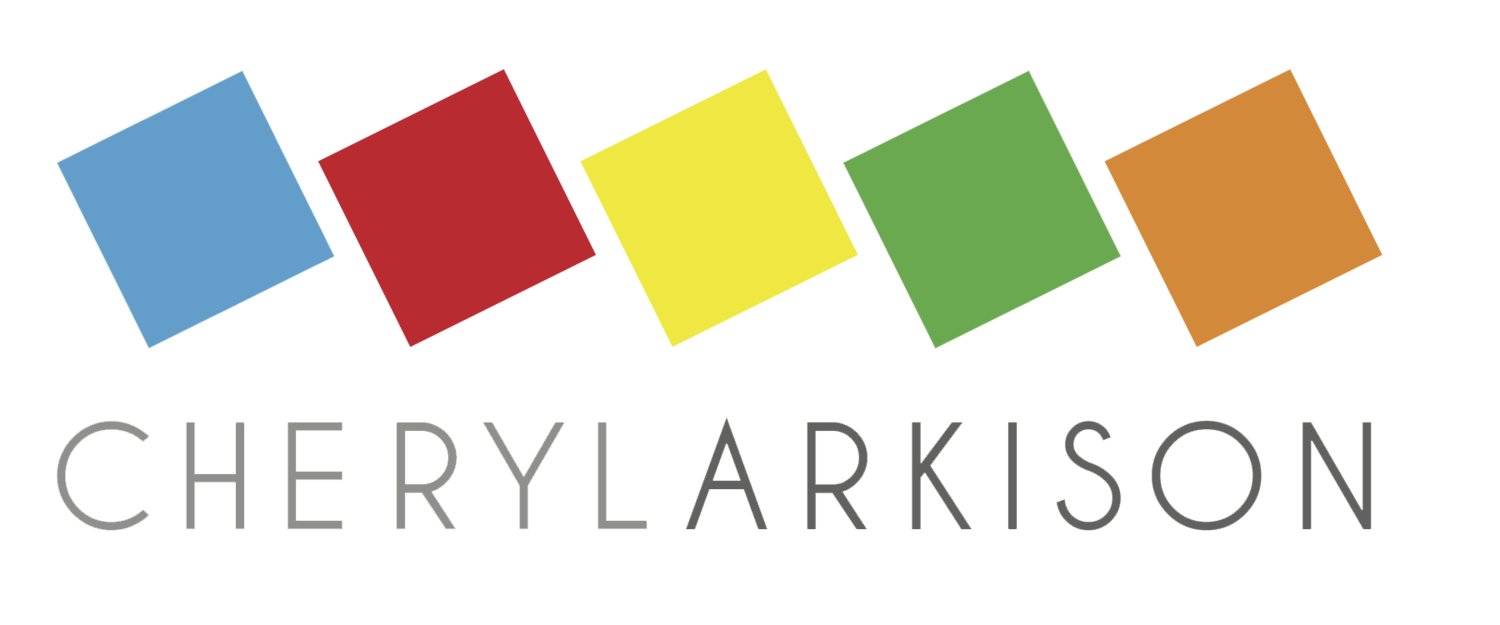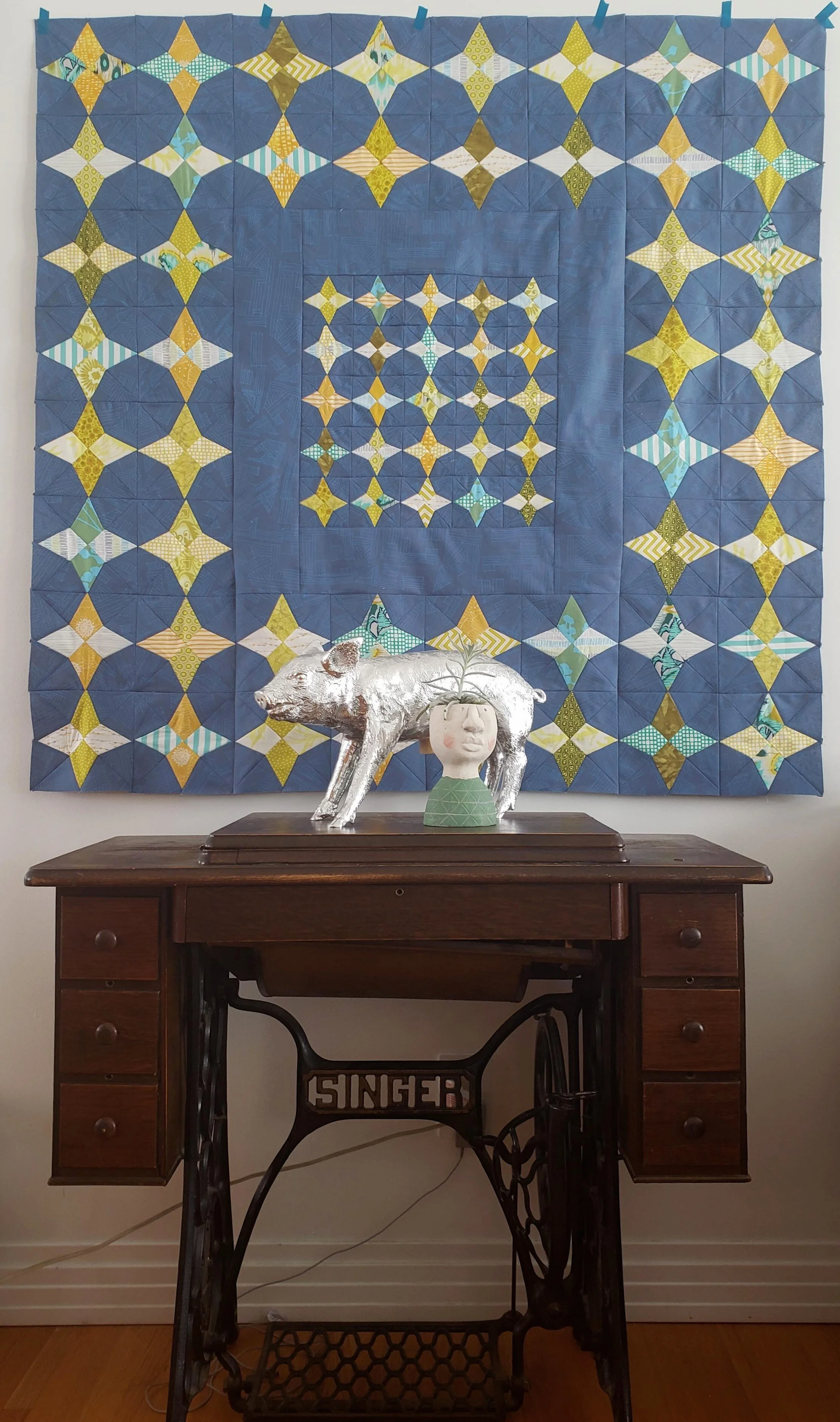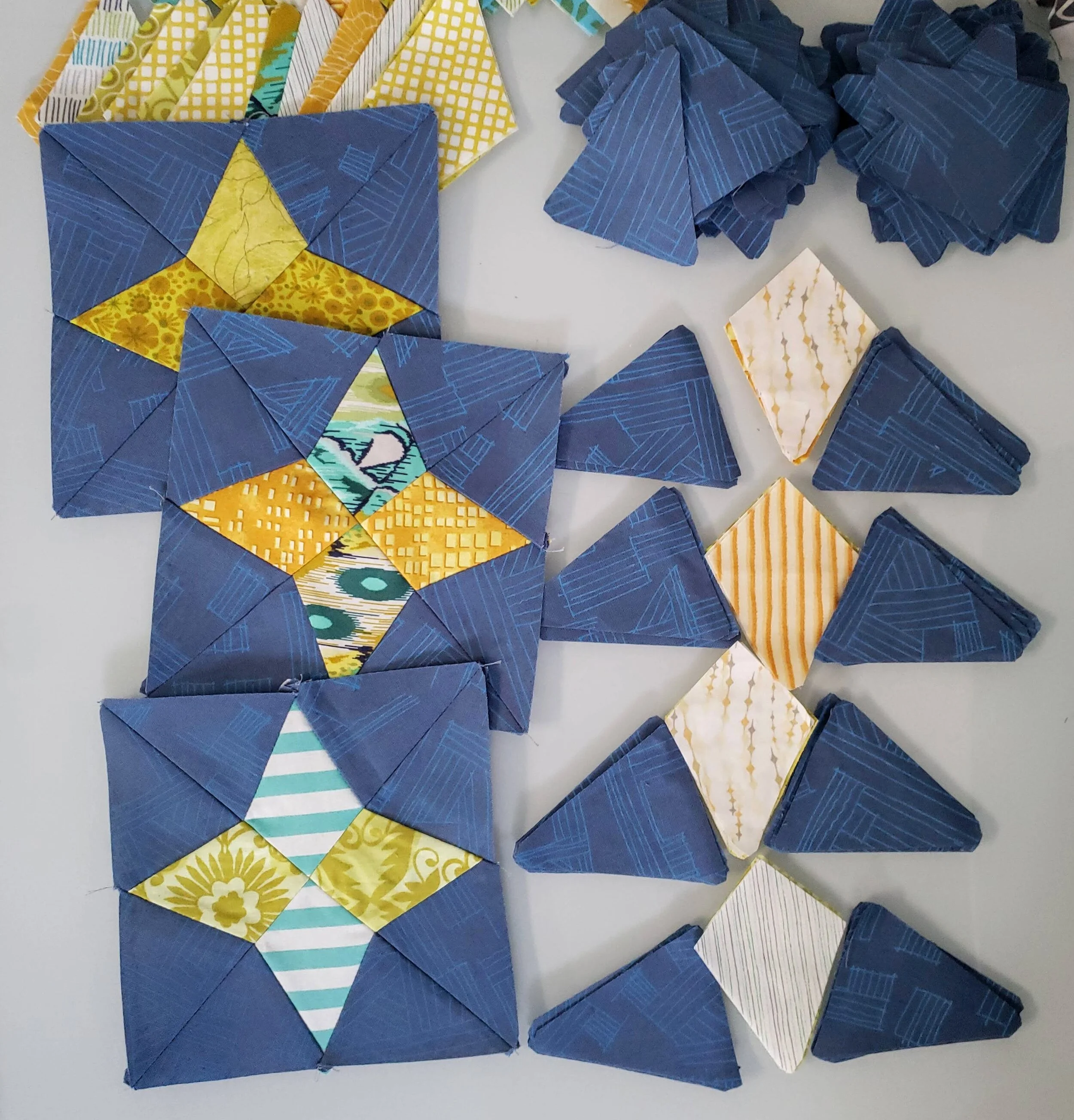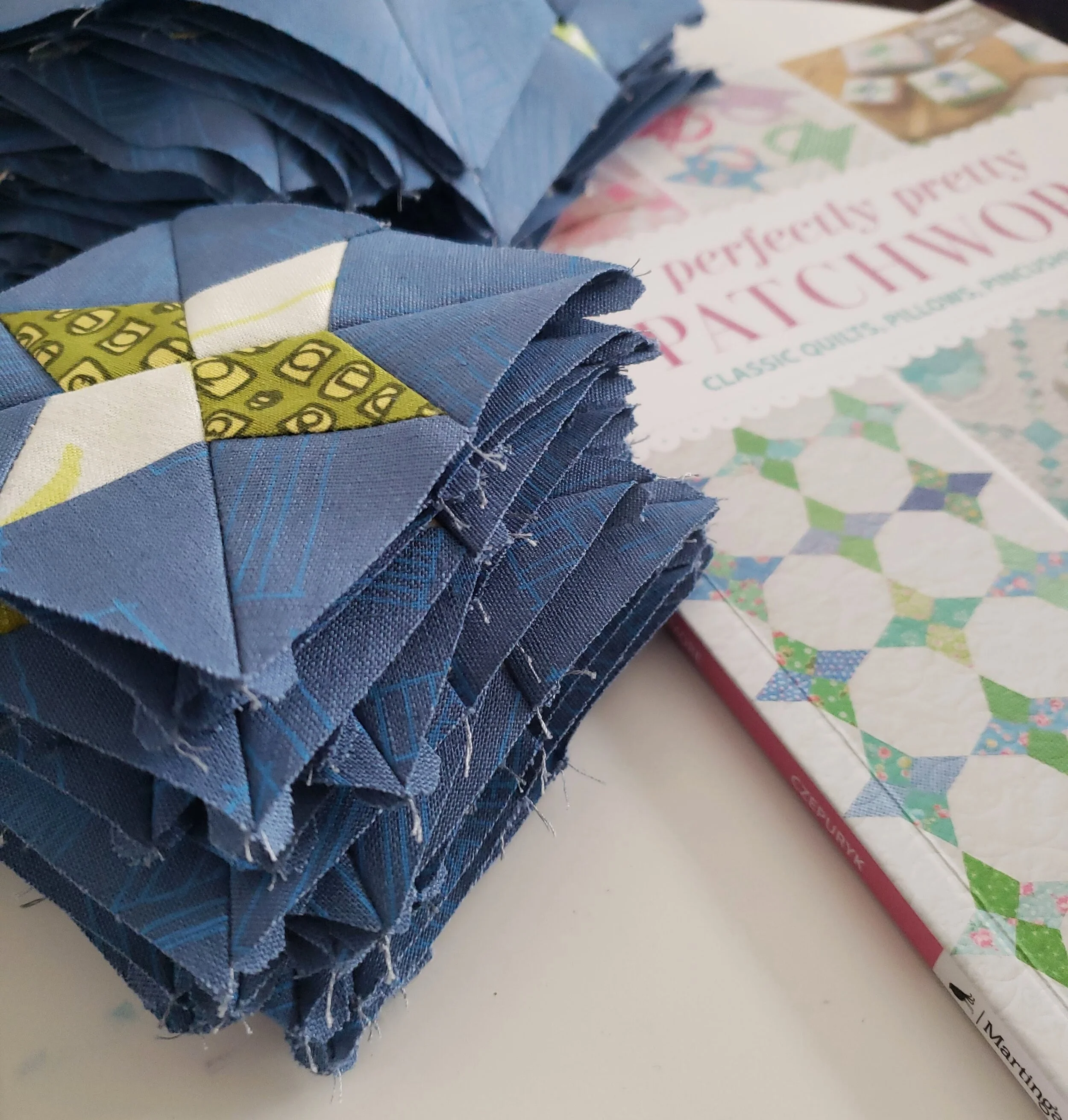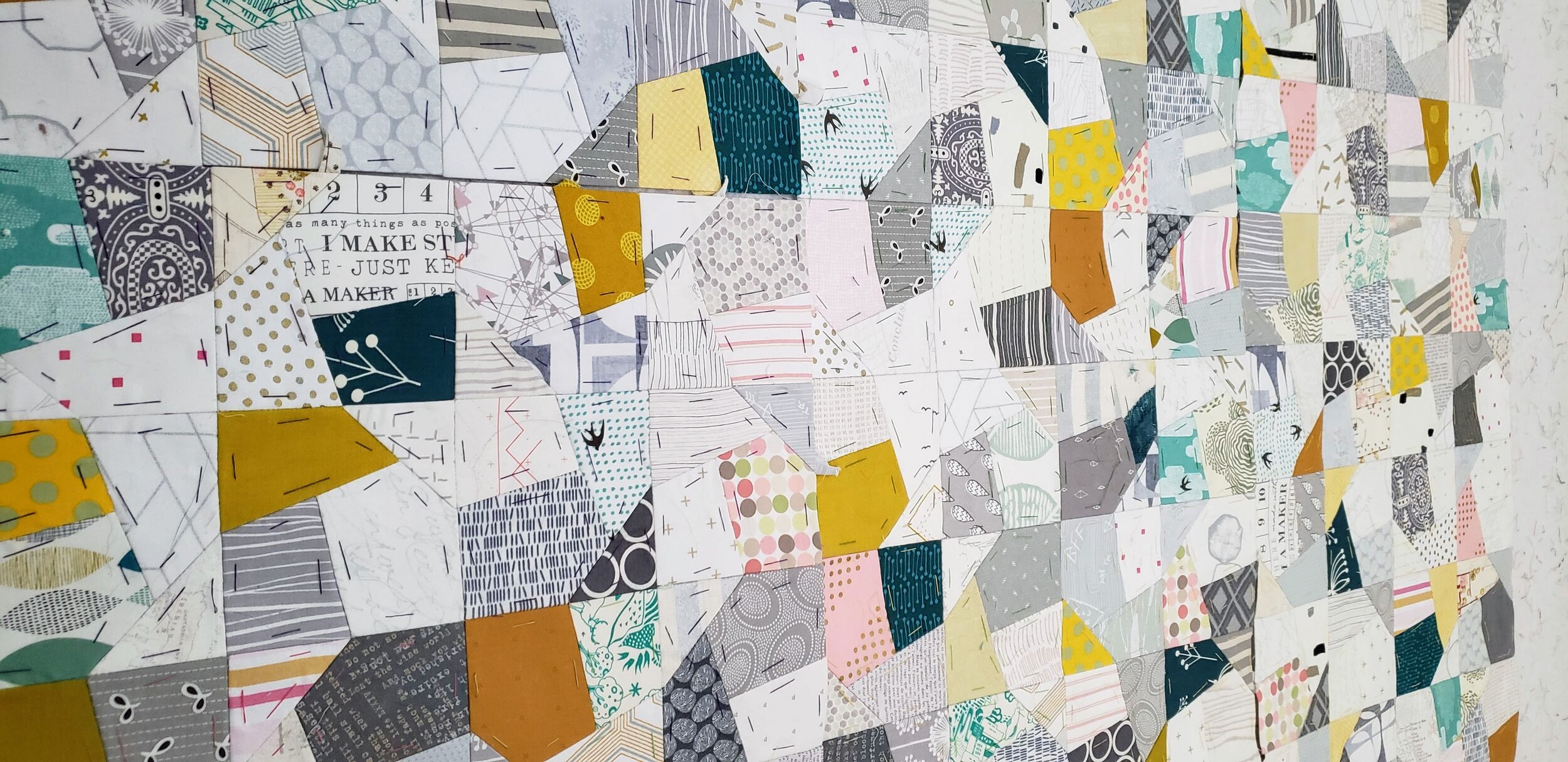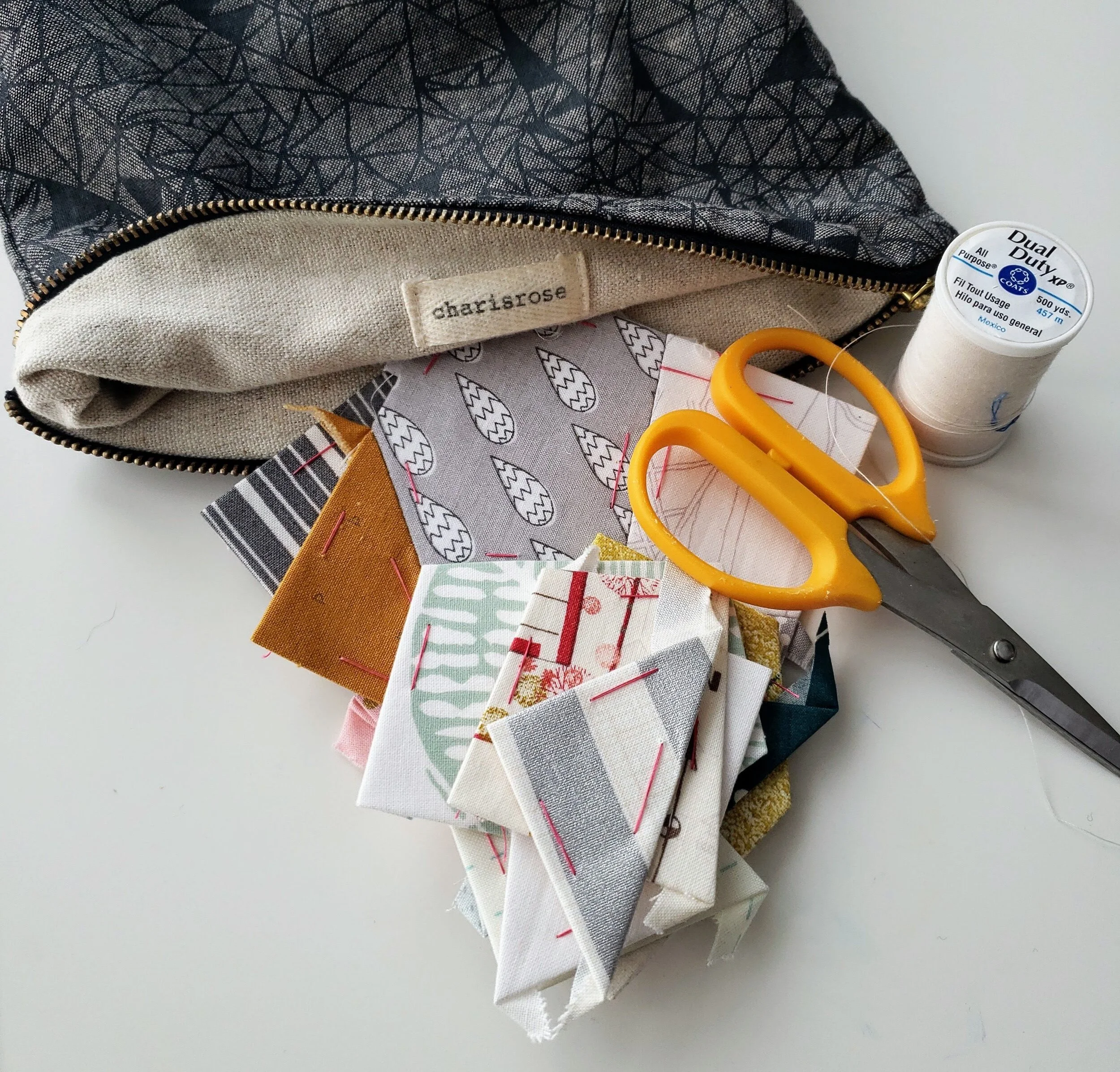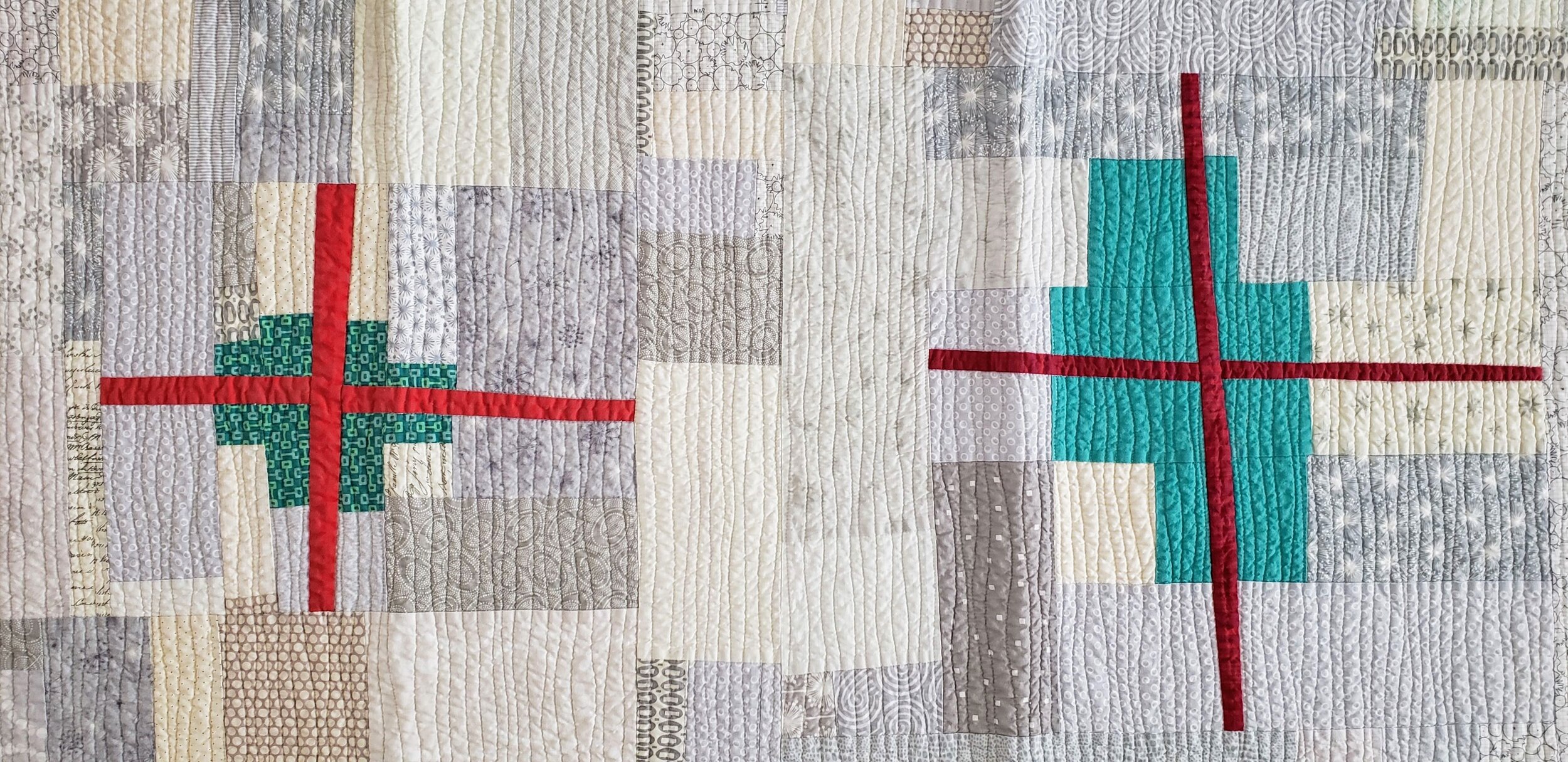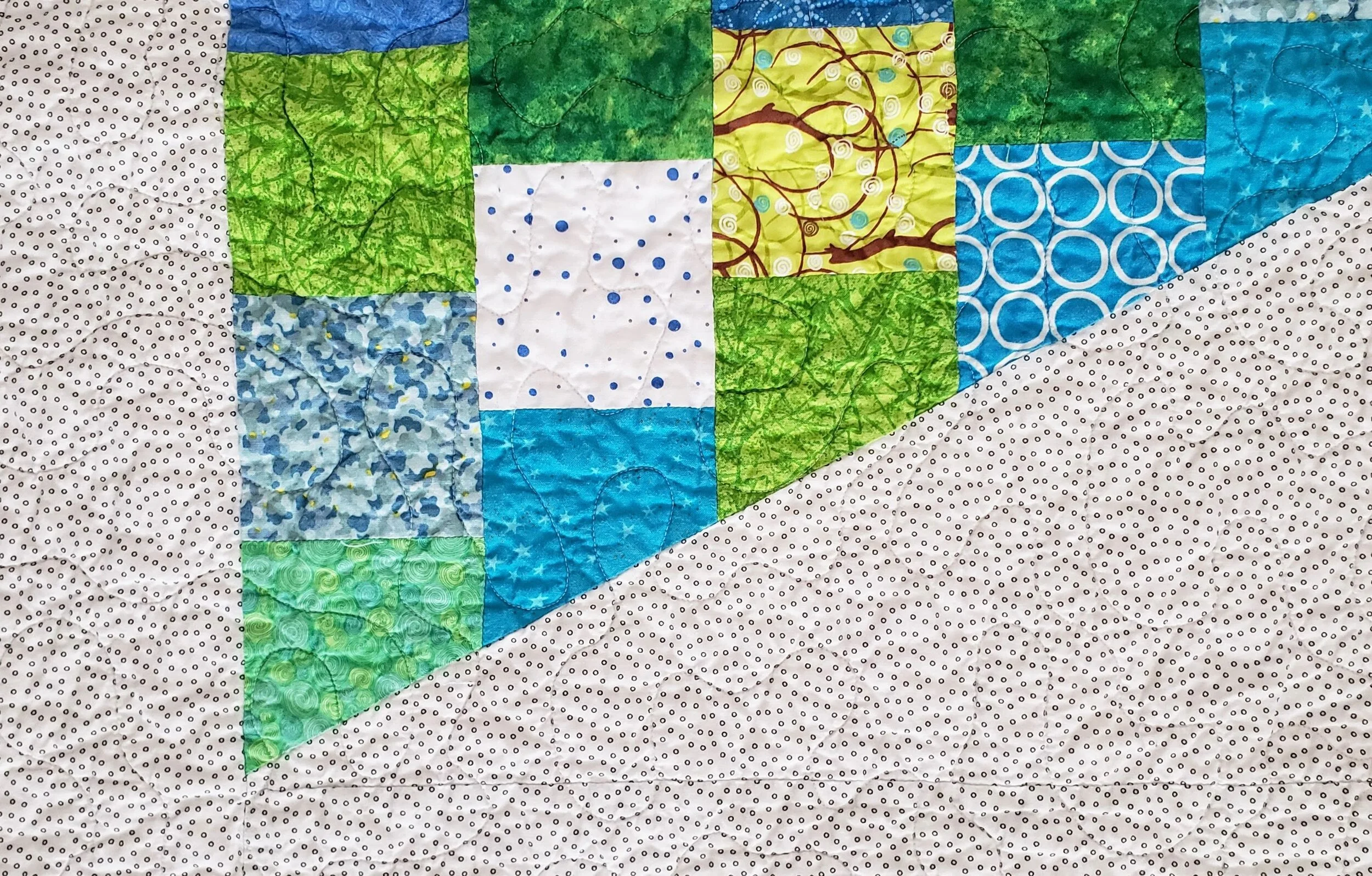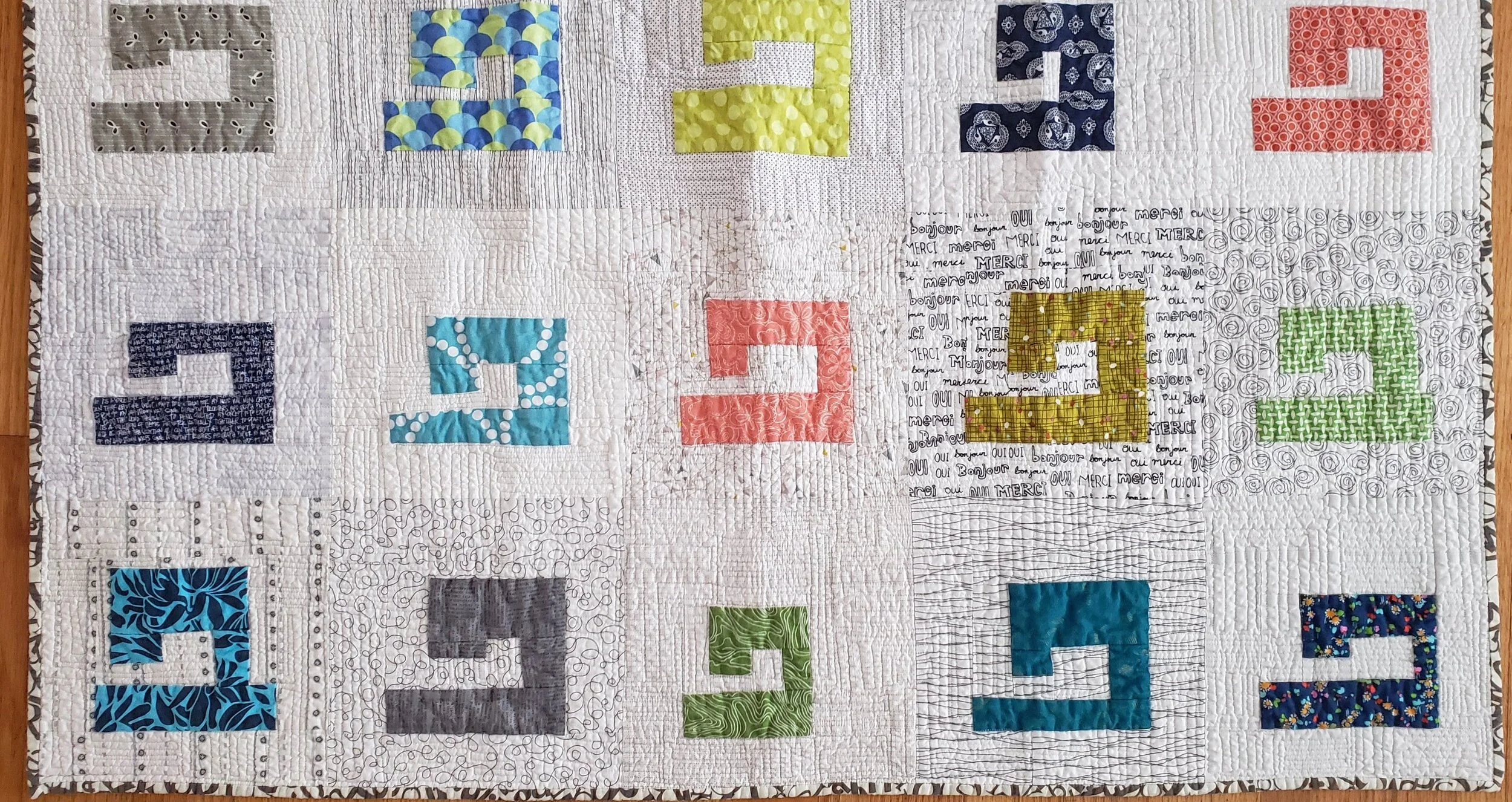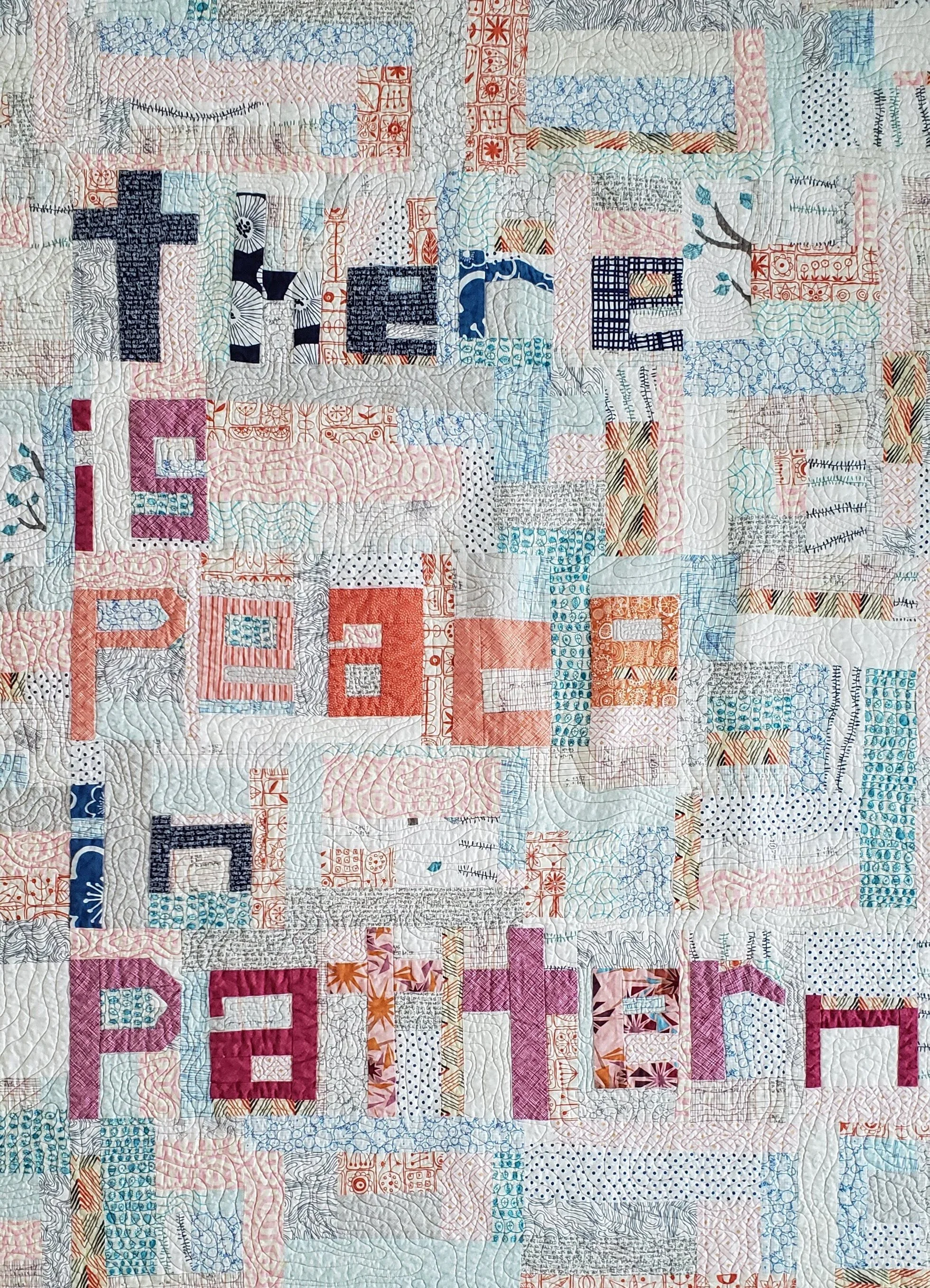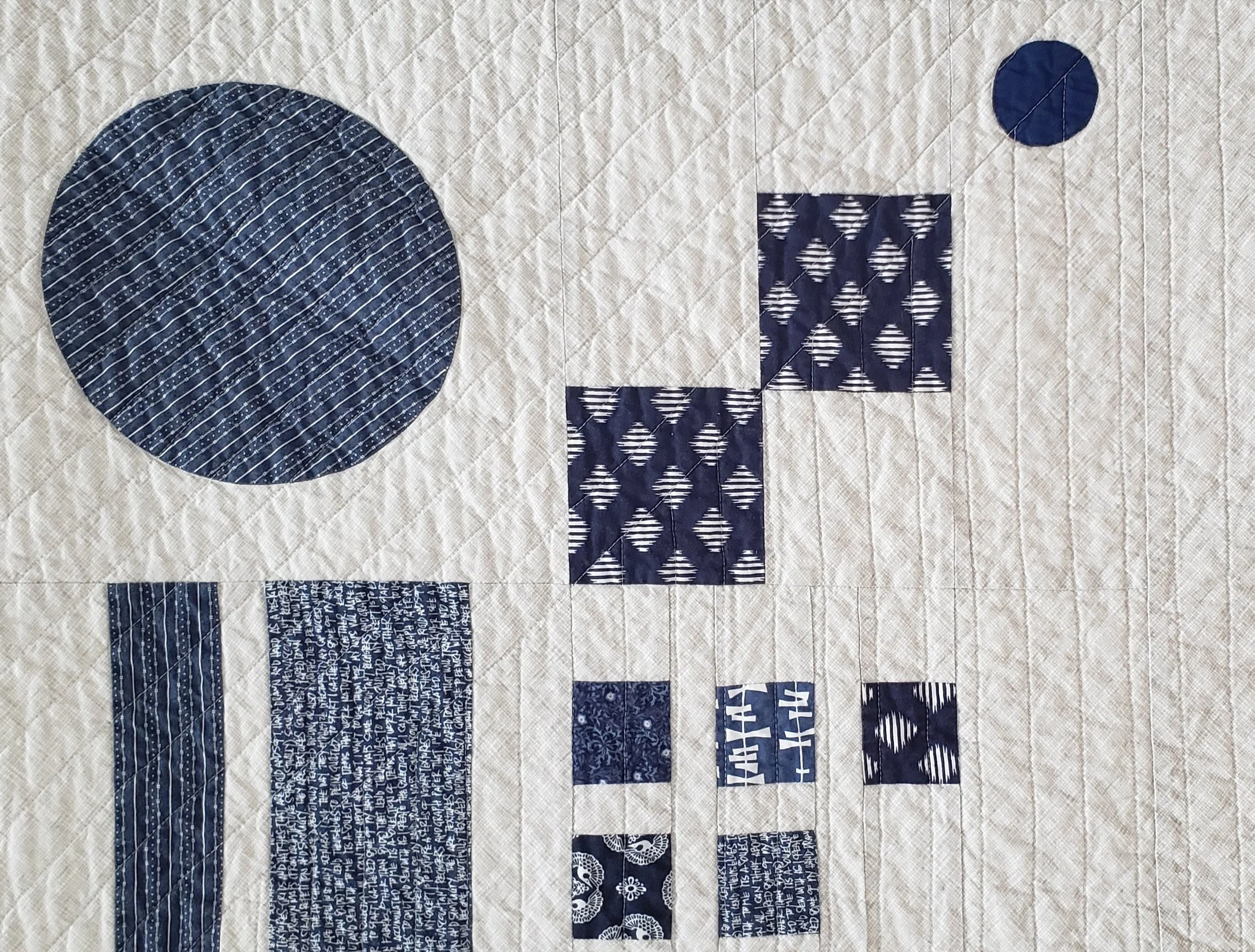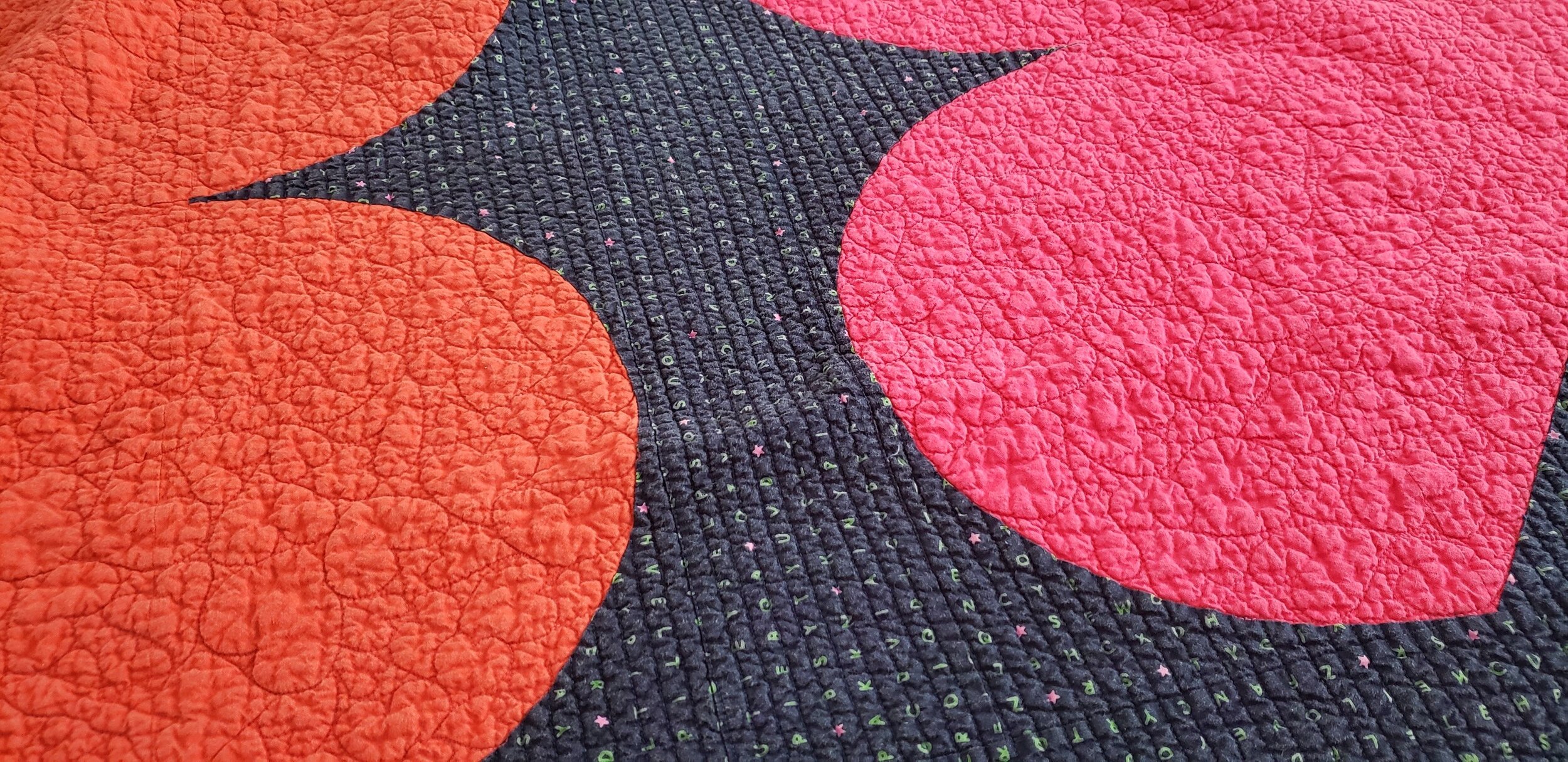Back when we could hang out with other people I had a lovely breakfast with Kristyne Czepuryk. We are lucky enough to live in the same city and get to hang out when our schedules allow. She shared a copy of her latest book with me. It is pretty and perfect and so bang on for her style, I love it. And right now, a lovely distraction from the real world. She asked me to make something from the book and share it as part of her book tour.
I chose the Mills and Stars pattern, one that has always appealed to me yet I’ve never made a single block. Because it is me, I changed up the colours quite a bit from Kristyne’s typical pastel palette. It works with the patterns in the book because they are classic, traditional patterns that be played with.
Mills and Stars can also be known by Hummingbird as well as Periwinkle. In fact, I remember Kristyne telling me the story of the block at that breakfast but it has slipped away from my brain.
I won’t lie, this quilt was a lot of work, especially for me. I am decidedly not a template person. Yet there I was cutting out hundreds of pieces for 73 blocks, each with 12 pieces of fabric in them. (I watched/listened to Fleabag, Dr. Thorne, and Austenland while I worked on it. Whatever it takes!) In the end, however, it was welcome work. A respite from the world to just get lost in someone else’s decision making. Once all the cutting is done it just becomes assembly line production. I always forget how fast the sewing goes when you’ve cut everything in advance. I did eventually finish.
The final quilt is a slight adaptation from the original pattern. I made it one row of stars all the way around smaller. My intention is to gift this as a baby quilt so I didn’t need it to be 60” square. I also used a single piece of the background around the center section, rather than what the pattern called for. Just to show off that cool Carolyn Friedlander fabric.
So often we think things aren’t ‘for us’. I won’t lie, the book is delightful and pretty, but it isn’t something I am instinctively drawn to. More often than not, however, it is about seeing shapes or projects beyond the fabric. Kind of like viewing a house you want to buy and ignoring the colour on the walls. I’m not a basic beige person in my house, but someone else may love it. I’d rather have lime green and that can turn off a whole new crowd of people. I think we all need to look at shapes and patterns more than fabric and colour when we see a book or a new quilt. That’s why I was drawn to this pattern myself. It was the mix of block sizes and the graphic nature of the block itself that grabbed me. I just had to add my own spin on it.
The books is full of classic designs and some really cool projects. For each block design there is a quilt pattern as well as a small project. And who is to say you can’t mix and match one block with another project? The instructions are attentive to detail, templates are included in a tear out sheet, and the photography is well, pretty. Kristyne has made a lovely book.
